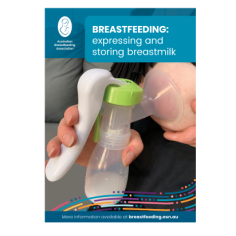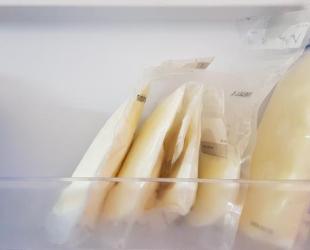Tips on expressing when you don’t have or need a pump.

Hand expressing is a useful skill and can be done without any special equipment, minimal planning and cost. It may be used for short-term or occasional expressing, or even on a longer-term basis.
Why express by hand?
Colostrum is often easier to hand express in the first couple of days after your baby’s birth. Some women also express colostrum antenatally.
When your milk supply rapidly increases, you may need to soften your overfull breasts to help your baby attach. If you have an initial fast let-down reflex, expressing off a little milk can help your baby feed more easily.
If you have damaged nipples, hand expressing is the gentlest way to express as it doesn’t put pressure on your nipples.
It is quick and easy to hand express a little milk for comfort if your breasts are too full and your baby won't feed.
You may want to express and freeze your milk for occasional times away from your baby.
Hand expressing is useful for the times when a pump is not convenient or available.
Even if you are using a breast pump, you may find you can get more milk at the end of an expressing session, if you hand express for a few minutes.
For mums who need to increase their milk supply, combining hand expressing with electric pumping has been found to improve milk production.1
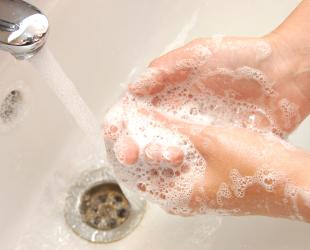
Thoroughly wash your hands and any containers you are using. There’s no need to sterilise them if your baby is well. Hot soapy water and air drying is fine.
You can use any container to catch your milk in, but something with a wide mouth is often easier as milk can squirt in all directions when you are expressing.

Place your thumb and forefinger on either side of your areola, well back from the nipple. Imagine there is line running between them - it should pass through your nipple.
A mirror may help if you can’t see the lower part of your breast.
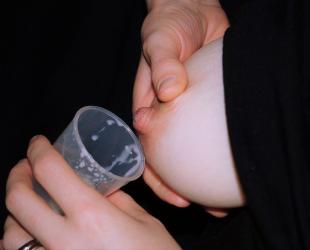
Gently press the thumb and forefinger back into the breast tissue until you feel the bulk of your breast tissue. Your breast may feel lumpy or tender at first.
As the milk flows, the breast tissue softens and expressing becomes easier.

Press your thumb and forefinger towards each other, using a slight rolling action to compress or gently squeeze the ducts and help move the milk out of the nipple.
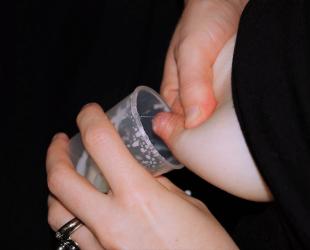
Continue pressing in a rhythmical way until the let-down reflex happens and the milk flows more easily. (It may even spray from the nipple). This may take several minutes at first.

When the flow eases, move to another section of the breast, working around the areola with your finger and thumb on either side of the nipple.
When the flow decreases, express the other breast. Change hands and breasts frequently to avoid fingers becoming too tired.
Hand expressing can take practice
Some mums become very efficient at hand expressing with practice and can remove large volumes in a short amount of time. In fact, some find they prefer to express by hand than by breast pump.
When you first try, you might feel quite discouraged if you only manage to get a small amount. Over time, you will become more familiar with the feel of your breasts. Once you get the hang of it, hand expressing can be a quick and efficient method.
Below are some links to external sites containing video clips showing expressing (including hand expressing) and storing breastmilk. Please note that the opinions expressed at the sites listed below do not necessarily reflect those of the Australian Breastfeeding Association.
Hand expressing antenatally
If you are pregnant and have been advised by your maternity care provider to express your colostrum, the following tips may help.
Colostrum is thick and small in volume, so expressing by hand often works best. This page explains the technique in detail and your midwife will also help you.
Most mums collect colostrum in a small syringe. You may be able to get these from the hospital you’ll be going to or from your midwife or obstetrician.
- Wash your hands first and pop a warm washer on your breast or have a warm shower before starting.
- As you are massaging and compressing your breast, colostrum should start to appear drop by drop. At first it may just be a glisten on the end of your nipple and it may take a bit of practice before drops appear.
- Collect the drops of colostrum with the syringe.
- Express each breast twice during the session.
You can use the same syringe if you collect your colostrum more than once a day, storing it in the fridge between sessions. At the end of the day, seal the syringe in a ziplock bag and mark it with the date. Store it in the freezer if you don't need it straight away.
If you need to transport your colostrum, check with your hospital for their procedures.
Read more about expressing colostrum.
© Australian Breastfeeding Association February 2023
Morton, J., Hall, J. Y., Wong, R. J., Thairu, I., Benitz, W. E., & Rhine, W. D. (2009). Combining hand techniques with electric pumping increases milk production in mothers of preterm infants. Journal of Perinatology, 29, 757–764.
Read more about expressing and storing
Evidence-led info and practical tips from our Breastfeeding Information Series
Breastfeeding: expressing and storing breastmilk
